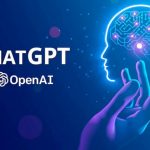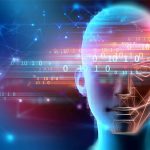Artificial intelligence (AI) has been a topic of fascination and concern for decades. As technology continues to develop at an unprecedented rate, it is becoming increasingly important to examine our thinking about AI and its potential dangers. In a recent article published by Time, writer Brian Gallagher explores the ways in which our thinking could doom us with AI. In this article, we will delve into Gallagher’s ideas and explore the potential dangers of our thinking about AI.
The Dangerous Thinking That Could Doom Us with AI:
The following are the potential dangers of our thinking that could doom us with AI:
- Overconfidence – Many people believe that AI will always act in our best interests, but this is not necessarily the case. Overconfidence in AI can lead to disastrous consequences when it makes decisions that conflict with our values and goals.
- Bias – AI is only as unbiased as the data it is trained on. If the data is biased, then the AI will be biased as well. This can lead to discrimination and unfair treatment of individuals and groups.
- Lack of Understanding – A lack of understanding of how AI works and its limitations can lead to unrealistic expectations and incorrect assumptions. This can result in poor decision-making and unintended consequences.
- Dependence – As AI becomes more integrated into our daily lives, we may become too dependent on it. This can lead to a loss of critical thinking skills and a lack of preparedness when AI fails or malfunctions.
Conclusion:
As AI continues to develop and become more integrated into our lives, it is important to examine our thinking about its potential dangers. Overconfidence, bias, lack of understanding, and dependence are just a few of the potential dangers that we must be aware of. By understanding these dangers and taking steps to mitigate them, we can ensure that AI is used in a way that benefits society as a whole.
Remember, AI is a tool, not a replacement for human intelligence. Let us use it wisely and with caution.
AI stands for artificial intelligence, which refers to the simulation of human intelligence in machines that are programmed to learn from data and make decisions. AI works by processing large amounts of data and using algorithms to identify patterns and make predictions.
AI is being used in a wide range of industries, including healthcare, finance, transportation, and more. Some of its benefits include increased efficiency, improved accuracy, and the ability to process large amounts of data quickly.
The potential dangers of AI include overconfidence, bias, a lack of understanding, and dependence. These dangers can lead to poor decision-making, discrimination, and unintended consequences.
Overconfidence in AI can lead to people trusting its decisions without questioning them, even when they conflict with our values and goals. To prevent this, it’s important to maintain a healthy skepticism of AI and to be aware of its limitations.
Bias in AI refers to the tendency for AI to make decisions that are discriminatory or unfair due to the biased data it’s trained on. This can perpetuate existing inequalities by reinforcing discriminatory practices and excluding certain individuals or groups.
A lack of understanding of AI’s limitations can lead to unrealistic expectations and incorrect assumptions, which can result in poor decision-making and unintended consequences. It’s important to be aware of AI’s limitations and to use it as a tool, rather than a replacement for human intelligence.
To mitigate the potential dangers of AI, we can take steps such as ensuring that AI is transparent and accountable, promoting diversity and inclusion in the development of AI, and maintaining a critical perspective on its use.
Examples of AI malfunctions include the 2016 Tesla Autopilot crash, the 2018 Uber autonomous vehicle accident, and the 2020 A-levels algorithm scandal in the UK. These malfunctions have impacted society by causing injury, death, and unfair treatment of individuals.
AI can be regulated, but there is currently no global standard for doing so. Some countries have implemented regulations to govern the use of AI, while others have called for international cooperation to establish ethical guidelines.
Artificial intelligence is becoming increasingly prevalent in our world!
From virtual assistants like Siri and Alexa to self-driving cars, AI is rapidly changing the way we live and work. However, with this increased use of AI comes potential dangers that we must be aware of.
One of the most significant dangers of AI is overconfidence. Many people assume that AI will always act in our best interests, but this is not necessarily the case. AI is only as good as the data it’s trained on, and if that data is biased or incomplete, then the AI’s decisions will be flawed. Overconfidence in AI can lead to disastrous consequences when it makes decisions that conflict with our values and goals.
Another danger of AI is bias. As mentioned earlier, AI is only as unbiased as the data it’s trained on. If the data is biased, then the AI will be biased as well. This can lead to discrimination and unfair treatment of individuals and groups. Bias in AI is a significant concern, particularly in areas like hiring and lending decisions, where biased AI can perpetuate existing inequalities.
A lack of understanding of how AI works and its limitations is also a potential danger. As AI becomes more prevalent in our lives, it’s easy to assume that it’s infallible. However, AI has limitations and can make mistakes. A lack of understanding of these limitations can lead to unrealistic expectations and incorrect assumptions. This can result in poor decision-making and unintended consequences.
Finally, dependence on AI is a danger that we must be aware of. As AI becomes more integrated into our daily lives, we may become too dependent on it. This can lead to a loss of critical thinking skills and a lack of preparedness when AI fails or malfunctions. We must remember that AI is a tool, not a replacement for human intelligence.
AI has the potential to revolutionize our world, but we must be aware of its potential dangers. Overconfidence, bias, lack of understanding, and dependence are just a few of the potential dangers that we must be aware of. By understanding these dangers and taking steps to mitigate them, we can ensure that AI is used in a way that benefits society as a whole.
What “Doom” means in the context of artificial intelligence?
“Doom” refers to the potential dangers and risks associated with the development and use of artificial intelligence. In the article “The Thinking That Could Doom Us with AI” published on Time, author Brian Gallagher explores the ways in which our thinking about AI could lead to disastrous consequences. This includes overconfidence in AI, bias, a lack of understanding, and dependence. These potential dangers could result in poor decision-making, discrimination, and unintended consequences that could impact society as a whole.
To avoid “Doom” with AI, it’s important to be aware of its potential dangers and to take steps to mitigate them. This includes promoting transparency and accountability in AI development, prioritizing diversity and inclusion, and maintaining a critical perspective on its use. By doing so, we can ensure that AI is used in a way that benefits society as a whole, while minimizing its potential risks.










